


The Syrian Revolution/ 17

From a Syrian FB page accompanied by this text:
Al Atareb Olympic Games 2012
Al Atrareb, Aleppo, Syria.
A film blog by Allan Berg Nielsen & Tue Steen Müller



A film blog by Allan Berg Nielsen & Tue Steen Müller

From a Syrian FB page accompanied by this text:
Al Atareb Olympic Games 2012
Al Atrareb, Aleppo, Syria.
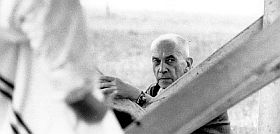
Chris Marker died today, filmkommentaren has written far too little about him, but here is a quote from the obituary of today in Guardian, please read the whole article and below also two links to what we have written about him, in English and Danish:
“The essay film, a form pitched between documentary and personal reflection, exploring the subjectivity of the cinematic perspective, has now become an accepted genre. Jean-Marie Straub, Danièle Huillet,Jean-Luc Godard, Errol Morris and Michael Moore are among its main recent exponents, but Chris Marker, who has died aged 91, was credited with inventing the form.
Marker’s creative use of sound, images and text in his poetic, political and philosophical documentaries made him one of the most inventive of film-makers. They looked forward to what is called “the new documentary”, but also looked back to the literary essay in the tradition of Michel de Montaigne. Marker’s interests lay in transitional societies – “life in the process of becoming history,” as he put it. How do various cultures perceive and sustain themselves and each other in the increasingly intermingled modern world?”
http://www.guardian.co.uk/film/2012/jul/30/chris-marker
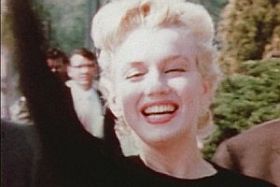
… will be revealed tomorrow, according to Realscreen, TIFF being Toronto International Film Festival, prestigious and like other big festivals (Berlin, Cannes and Venice) nowadays putting a good focus on documentaries, or as they call it in the trade magazine, non-fiction.
But already revealed to be in the programme is a new film by Liz Garbus (“Bobby Fischer Against the World”) titled “Love, Marilyn”. Here is what the programmer of the TIFF, Thom Powers, says about the anticipated and star-filled Marilyn Monroe doc: “It takes a very innovative approach in how to deal with these recently discovered boxes of books and letters. Liz decided to reach out to some of the most interesting performers working today [to voice the letters], although that’s only one aspect of the film.
“But what was a revelation to me about this film is that Marilyn Monroe is such a ubiquitous figure in popular culture, but when you really get into the story, you realize how much you don’t know about her. I think she emerges in this film as more of a three dimensional person.”

Korlederen Louise Adrian har oprettet et kor af indsatte på Statsfængslet i Vridsløselille og filmen følger hende i arbejdet, som ikke kun består i at øve sig og synge. Nej, hun og koristerne skriver musik og tekst selv, og det er der kommet en dejlig film om et sympatisk arbejde ud af, en af den slags film, som vokser og vokser, og som for alvor tager fat, da tv-timen er ved at være forbi. Godt, der findes en lang version, den historie kan ikke hurtigt overstås.
Men hvad er historien egentlig? Hvis historie? Det er som om, der har været ubeslutsomhed i klipperummet, hvor skal fokus være? Alt i materialet har peget på Louise Adrian, for hun fylder hver scene med sin tilstedeværelse, hun lyser simpelthen. Men nogen har tilsyneladende ment, at fokus burde være hos koristerne, naturligvis på grund af af den specielle situation, de er i, alle afsonende lange domme, være hos én af dem, Brian for eksempel, eller hos hele banden, altså en kollektiv film. Det ser ud til, at det sidste nærmest har været beslutningen, og det lider filmen under. Korets medlemmer kommer kun langsomt i gang og ud over kanten frem til mit engagement, mens korlederen gnistrer og stråler fra først til sidst.
Det betyder så det alvorlige, at filmens kerne, det kunstneriske arbejde med at omsætte personligt stof til sange og korværker i nogen grad i filmens skildring overskygges af dette personlige stofs biografiske indhold (koristerne skaber værkerne på deres egne ulykkelige historier) og sentimentaliteten truer atter og atter.
To ting redder filmen, de medvirkende korsangeres ukuelige humør, vid og charme og først og sidst korlederens benhårde krav til ærlighed og kvalitet i hver detalje, i hvert moment af hvert musikstykkes elementer og forløb. Det ender med alligevel ikke at blive en debatfilm om kriminalforsorg, det er en musical om kunstens transformation af det personlige til det almene. Dette hårde arbejde.
Annette Mari Olsen og Katia Forbert Petersen: Fangekoret, Danmark 2012, 58 min./76 min. Fotografi: Katia Forbert Petersen, klip: Wojtek Kloczko, produktion: Sfinx Film/TV for DR2 ved Mette Hoffmann Meyer. Kan ses på filmstriben.dk

Den er fra 1999, den er en klassiker i dag, og den vil blive stående som klassiker i filmlitteraturen i fremtiden. Som sådan er den altid aktuel, ikke kun fordi der nu er olympiade (den foregår som bekendt under olympiaden i München 1972), men fordi den handler om grusom vold af den slags, nogle kalder terror, andre kalder krig, og om troskyldighedens nederlag med sin manglende professionalisme i den forbindelse.
Jeg så på Dokumania i tirsdags, at den film i sine centrale dele holder styrken efter tretten år, med langsomheden frem for hastværket, med koncentrationen frem for overfladiskheden, med fremstillingens ro midt i begivenhedernes forvirring, som den skildrer. Altså især i konstruktionens og fortællingens centrale elementer. Der er for mig at se disse fire:
Der er den kronologiske beretning (vældig støttet af Michael Douglas’ fortællerstemme) af selve begivenhedsforløbet fra gidseltagningens forberedelse over dens pinefulde faser til til det forfærdende slutspil i lufthavnen, fortalt som en nedtælling minut for minut.
Der er det store gennemgående interview med en af gidseltagerne (formodentlig den eneste overlevende), som ser aktionen, som han kalder det, som en krigshandling.
Der er her overfor interviewet med chefen for den israelske efterretningstjeneste, som må se magtesløs til, mens han nøgternt noterer sig alle de fejl, de tyske politifolk begår fra øverst til nederst, fra først til sidst.
Og der er endelig heroverfor igen den tyske general, som kynisk erindrer det samme, han, som derefter fik til opgave at udvikle et fuldt ud professionelt tysk antiterrorkorps.
Dette er filmens umistelige kerne. Dens overflødige og sentimentale rammeværk vil blive glemt, og det gør ikke noget. Dramaets detaljer og de tre interviews’ nøgterne sagkundskab inden for det fag bliver i sindet al tid – som klassisk filmkunst.
Tue Steen Müller har her på siden dels refereret et interview med den meget flittige instruktør Kevin Macdonald i hans syn på dokumentarfilms udvidede muligheder i dag dels nævnt ham i forbindelse med en lang række festvals, hvor hans film har været vist, senest festivalen i Tel Aviv, april i år, hvor hans helt nye Marley var den ene af to åbningsfilm. Andre film bør nævnes: Touching the Void, 2005, My Enemy’s Enemy, 2007, som kan ses på filmstriben.dk og Life in a Day, 2010, filmen han taler om i det nævnte interview.

Jamen, hvad er nu det for noget? Er den ikke kedelig den film? Jeg havde da ventet noget helt særligt og regulært spændende, i hvert fald noget dybt interessant, eller bare lidt interessant af denne film om den præsident, amerikanerne vist nok bedst kan lide. Men jeg så de næsten to timer totalt forvirret af mistet overblik og ganske energiforladt, for det kunne slet ikke vække min interesse.
Jeg er klar over, at det er noget med mig, jeg kan nogen gange have svært ved at forstå journalistiske pointer, vel på grund af manglende relevant paratviden. Men det kan også være noget med formen, Eugene Jarecki har valgt til sin præsidentfilm. Jeg har jo for kort tid siden set Clinton af Barak Goodman, hvor jeg med stigende interesse havde fulgt et shakespearesk drama i fire akter, et kronologisk epos som en islandsk saga og en krønike som fra et dansk kloster i middelalderen genfortalt eller gendigtet af Saxo. Alt det kan jo ikke være sandt på én gang, men det var sandt, mens jeg så det, for sådan så jeg det. Begejstret.
Det fælles for de fire genrer er kronologien. At filmen loyalt gengiver begivenhederne i tidsrækkefølge i samarbejde med min hukommelse, som husker dele af begivenhedsrækken i forvejen, fra andre tekster, fra mit eget liv. Jeg drives af nysgerrighed efter, hvad der sker med mig i mit eget liv. Det er naturligvis derfor, Clinton er min helt. Som en lang række fyrster var det i historiebogen i skolen, hos Shakespeare på biblioteket, i Ingemanns romaner. Min smag er kulørt.
Jarecki vil noget andet. Han vil undersøge Reagan som person, han vil lave en klog film om en statsleder, der iagttages som et objekt, der nøgternt holdes ude fra kroppen og al mulig identifikation, og han vil belære mig med denne klogskab. Han vil ikke lave en kronologisk parafrase, han vil lave en tematisk fremstilling, tage problemstilling efter problemstilling og forholde sig moralfilosofisk til dem. Så han vælger som form det journalistiske essay, men han tør ikke hengive sig til tankedybden i temaerne, som bliver postulater som overskrifter, men han slipper ikke den kronologiske tryghed. For han vælger begge dele, drevet af ambition og af, hvad han tror nødvendigt. Jeg tror, at filmen mister overblikket. Det er derfor, jeg mistede det. Fortællerstemmen er valgt bort som mulighed, forståelsen skal fremgå af vidnernes udsagn i interviewene. Men det lykkes ikke, for af hensyn til filmens fremdrift klippes fremdriften ud af interviewene. Jeg mister interessen, finder Reagan er konstant uinteressant i det han siger, også i de to berømte taler. Jeg mangler min helt. I et essay er essayisten normalt helten, identifikationspunktet. Men her er ingen fortællerstemme, og han er heller ikke til at finde for mig i klippets valg, linje og rytme. Det skulle være en klog film om Ronald Reagan, jeg fangede ikke pointerne, fattede ikke dybderne. Det har nok med mig og mine forudsætninger at gøre, men jeg synes det er en kedelig film, og jeg tror faktisk ikke det er en klog film.
Eugene Jarecki: Reagan, USA 2011, 45 + 55 min. Sendt på DR2 23. og 24. juli.
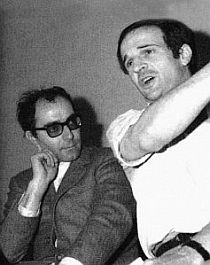
A tour down memory lane. And can’t help it – It still brings a tear to the eye to watch Jean-Pierre Léaud run towards the sea, stop and look at us in the end scene of ”The 400 Blows”, the first long film of Truffaut from 1959. As it brings a smile to watch Jean-Paul Belmondo do his Bogart face imitation in ”Breathless” by Godard from 1960. Or see Jean Seberg stand in front of a poster of a painting by Renoir. It was in the 60’es I got my film education and La Nouvelle Vague with Truffaut and Godard were my heroes followed by Agnès Varda, Eric Rohmer, Jacques Rivette (later) and Claude Chabrol. So this film by Emmanuel Laurent could only be pure pleasure, and it was.
The idea of the film is to give us the story of two friends, who met each other in 1949, worked together for years, wrote critiques in Cahiers du Cinema, had their heroes (Truffaut: Hitchcock, Godard: Rossellini and Lang), fought against the dismissal of Langlois at the Cinématheque, and were on the barricades at the festival in Cannes in 1968 as well as in the streets of Paris in May the same year. And then the break came with the famous letters – Godard who attacked Truffaut in connection with ”Day for Night” (La Nuit Américaine) for being a liar, getting back a 20 page letter against Godard turning political. (The letters can be read on the French website below).
As film history, with clips from the films, with a lot of archive interviews with both of them, it is all there and well put together. Whereas the core/red thread of the story with Jean-Pierre Léaud as the kid and young man with two fathers, not only being the ”petit frère” of Truffaut, the Antoine Doinel, but also the marxist agitator in several of Godard’s political works, is not really convincingly integrated in the narrative, even if it is a brilliant and more than relevant approach. Another detail that does not work is the presence of a young female director of today, who walks around ”discovering” what happened then. Could have done without that in a film that otherwise calls for another view and is a Must-See for all film students. And thanks for the end:
Jean-Pierre Léaud at the casting for the role in ”The 400 Blows”.
France, 2010, 93 mins.
http://www.boxoffice.com/articles/2010-05-emmanuel-laurent-talks-two-in-the-wave
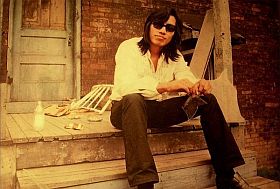
A newspaper page: ”American Zero. South African Hero”. The South Africans were right, Rodriguez, the musician the film is about, was/is a song writer and singer on the level of Bob Dylan, but he never made it in the U.S., whereas he was a superstar in apartheid South Africa, where he sold around half a million records and became an icon for the anti-establishment movement – and banned by the official censorship.
It is an incredible story that this award-winning film brings to the screen in a way that ressembles the style of ”Man on Wire”: interviews, archive, reconstructions, ”americana” images of streets and diners in Detroit, his city, and fine animation parts to accompany his music. A kind of suspense is built up: How did he kill himself, with a gun pointing at the head or did he really set fire to himself on stage?
The director follows a couple of fans searching for the answer. His last record was out in November 1971 and he was found alive and kicking 25 years later. In Detroit. It turns out that he had had tough jobs in the building industry, that he at a point was running for a seat in the City Council, and that he has lived the same place for 40 years.
After Rodriguez is found he tours with huge success in South Africa, visually covered through archive and wonderful home video material shot by one of his daughters, who become very much present at the end of the film. They talk about their father and his greatness as do journalists and music people, and this becomes the problem of the film: Rodriguez is no talker, he is a modest man, a fine musician, and why not leave it like that? The film becomes repititive and slightly tabloid where it could have been much more strong letting the small interview bites with Rodriguez stand as they are with no kliché like interviews surround him.
NB. His music is out in connection with the film.
Sweden/UK, 85 mins., 2011
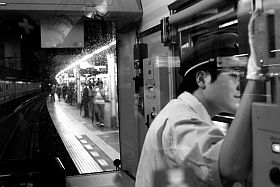
After the original, masterly done ”Life in Loops”, the remix of Michael Glawogger’s ”Megacities”, accompanied by music by the Sofa Surfers, Austrian Timo Novotny has gone underground to investigate the magic of the subways and metros of – again – megacities like New York, Los Angeles, Tokyo, Hongkong and Moscow with Vienna as the starting point and a place the director returns to. Again he has brought the Sofa Surfers with him and again he delivers an extravagant visual journey, a reflection on a space that millions of people daily occupy to be transported, for some an escape from the upper world, for others a space full of stories connected to its travellers. Novotny is an aesthete and his fascination of lines and forms is brilliantly conveyed through the montage of images, words and the music of the Sofa Surfers. Music that flows the whole way through and is synergetic with the image in pulse and rythm, contrary to the mainstream use of music in documentaries today, where the music is poured on like sugar to hide lack of energy in the sequences.
He starts his journey in the New York Subway, a place we know from many other films, homeless people are here, a micro-world it is, that shows – as one of the people we do not see but hear, say – that New York belongs to noone = everyone. You lose the feeling of time and space, you get overwhelmed by ”how many stories that are going on here”, ”I found a boyfriend in the subway”, you go by subway ”to be for yourself”. In this first chapter that also
includes a brief hip hop performance in a train, there are many words outside the image, too many for my taste, some are a bit naïve and banal. On the other hand one of the peaks of the film comes when the black, bearded poet recites one of his poems, accompanied by the music and a magnificent montage that ressembles the opening sequences of ”Life in Loops”.
In the next chapter, in Los Angeles, close to Hollywood, the metro looks like a film set. Breaking all rules of normal documentary storytelling, Novotny here places a man on the platform and to him comes people to talk a bit, small stories, faces, and a rap performance that the director takes as an invitation to ”go bananas” with the editing… In between the chapters a man with a camera (the director´s alter ego?) takes photos where he is not allowed to be, walking along the rails.
Tokyo, where the train is always on time and where staff on the platform pushes the last one into the train carriage, for women often to be sexually harrassed, says one of the people, we do not see but hear. The solution for telling the story is in this case to follow one person, whose thoughts circle around death and suicide. Again Novotny takes stylistical elements from all shelves – slow motion, stop motion animation, whatever suits the sequence. Everything in the editing is controlled but within the controlled space, small music videos, you could call it, emerge and stand out.
From Hongkong to Moscow, where the audience is invited to follow a group of Italian tourists in the metropole’s beautiful underground, a strong contrast to the anonymous ”efficient” transporter in Hongkong, a metro with a soul, spiritual as it is, stressed by the Sofa Surfers introduction of the sound of bells in their musical score.
There is a flow in this film, a very intense one with stops on the way, with faces within the lines and the forms of the tracks and the movements, with light and shadow, and with sometimes incredibly beautiful sequences. With a, in a positive sense, aggressive approach to its subject.
Thank you Novotny, for not having chosen the Parisian metro, where it is not an experience, but a torture to walk and walk from one station to the other (did you try that with Les Halles?) but next time in Copenhagen I will pick you up in the airport and bring you to sit with me at the front of the driver loose wagon. It is fascinating like it is to watch your new work.
The film premiered at the Karlovy Vary International Film Festival beginning of July, went to Sarajeo Intl. Film Festival and is to have its live premiere in Venice at the opening of the Austrian Pavilion of the Architecture Biennale late August.
Austria, 85 mins., 2012
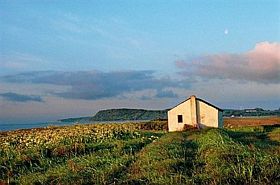
Denne dejlige egnsskildring genudsendes på onsdag om aftenen ganske passende (sommer, turvejr og ferie) og så berettiget, for den er en vigtig og så ubemærket selvfølgelig smuk tv-dokumentar. Hans Edvard Nørregaard-Nielsen krediteres for den af DR K. Vel som medvirkende og forfatter, den blev jo produceret i forbindelse med udgivelsen sidste år af hans to binds værk om Limfjordens topografi og kulturhistorie, hvor den i dvd kopi følger med i en lomme på bindets inderside. Nørregaard-Nielsen har skrevet en vidunderlig tekst på en sikkert på flere måder livslang forundersøgelse. Men det skal nævnes, at Kirsten Klein har medvirket til bogen i betydeligt omfang, og at de sammen er kloge og følsomme medvirkende i Jørgensens og Lundøs film, for det er da bestemt de sidstnævnte, som har lavet filmen, den er deres arbejde, og de stiller det generøst beskedne til rådighed for Nørregaard-Nielsen og Klein, som er dem, vi ser og hører. Jeg skrev glad om dem her på siden, da filmen blev sendt første gang: “Det er en uafbrudt tilfredsstillelse at følge de tos kloge, indsigtsfulde, originale og på hver sin måde, i det danske sprog og i det danske fotografi, virtuose skildring af Limfjordens topografi, historie og poesi.” Jeg glæder mig til at gøre det igen.
Jacob Jørgensen og Henrik Lundø: Min dal, 2011, 50 min. Medvirkende: Kirsten Klein og Hans Edvard Nørregaard-Nielsen, produktion: JJ Film. Sendes onsdag 25. juli 20:00 på DR K. Filmen findes på filmstriben.dk Jørgensen og Lundø har tidligere samarbejdet med Nørregaard-Nielsen om et lignende projekt, Jeg så det land, 2005, 61 min. Også den kan ses på filmstriben.dk